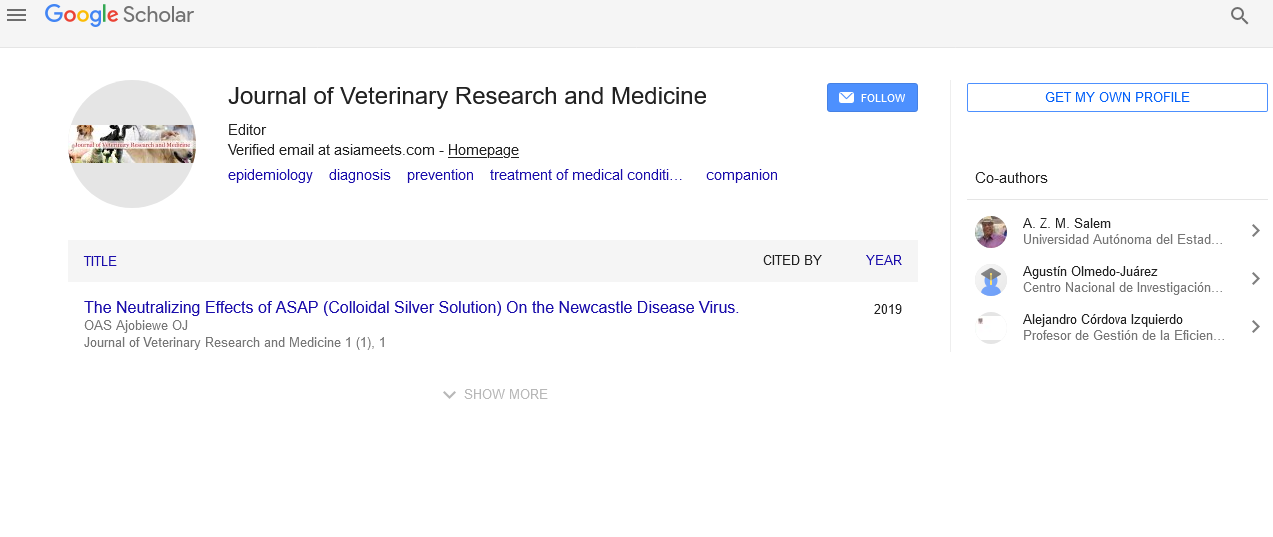Aspects of lactations in the animals
Received: 04-Oct-2021 Accepted Date: Oct 18, 2021; Published: 25-Oct-2021
Citation: Salin A. Aspects of lactations in the animals. J Vet Res Med 2021;3(2):5.
This open-access article is distributed under the terms of the Creative Commons Attribution Non-Commercial License (CC BY-NC) (http://creativecommons.org/licenses/by-nc/4.0/), which permits reuse, distribution and reproduction of the article, provided that the original work is properly cited and the reuse is restricted to noncommercial purposes. For commercial reuse, contact reprints@pulsus.com
Description
Many aspects of lactation in farm animals vary considerably from conditions in wild animals or human beings because domestication and breeding have increased milk yield in dairy animals. The biology of lactation in cattle, therefore, deals particularly with aspects of mammary gland function and associated topics in farm animals that had been considerably changed through genetic selection for production developments crucial for the desires of both manufacturer and consumers.
In the existing issue, the most vital research topics in mammary gland biology in cattle are significantly addressed. The assessment papers cope with a huge range of topics starting from mammary development, overregulation and manipulation of milk secretion at distinctive ranges of lactation, alternatives to the 305-day standard lactation in dairy cows, old and new indicators in milk for fitness status and metabolic load, towards new trends in milking routines.
Most mammalian farm animal species are ungulates, and their newborn offspring depend upon great colostrum to ensure survival. During lactation, the function of the mammary gland in dairy ruminants is affected by numerous exogenous elements including milking frequency and feed supply, and endogenous elements, for example, stage of lactation, or genetics. The cellular mechanisms mediating the response in the direction of such elements contain secretory activity, epigenetic marks, and adjustments in cell numbers are reviewed contrasting additionally reversible as opposed to irreversible changes of milk manufacturing.
The manipulation of milk secretion goes in new directions. Instead of pushing the mammary in the direction of higher production through manipulating various endocrine systems, new methods aim at a brief reduction of production in phases when the genetic drive for milk yield might be compromising animal welfare and health. The major stages of the interest are the very first days of lactation to facilitate the adaptation to lactation after the dry period and additionally at dry off if cows produce still very high quantities of milk, and it is a unique challenge to obtain a cessation of milk secretion. New outcomes revising the role of prolactin for lactation in ruminants are reviewed focusing on the importance of prolactin inhibitors for transiently reducing milk yield.
The growth of milk yields achieved through genetic and, more recently, genomic selection, has also caused significant concerns about animal health in dairy cows. Besides the troubles associated with the negative energy balance in early lactation, excessive milk yields towards drying-off may impose compromised welfare and health. With this background, new concepts emerged during the past decade for circumventing those issues: one takes variations in the dry period, starting from the entire omission of a dry period to differing lengths of the dry period, into consideration. The long-term consequences for metabolism and welfare are presented, and feeding techniques for coping with the increased energy balance throughout the whole lactation period counteracting over conditioning are outlined.
A second way, aiming to extend the duration of the lactation cycle, is based on postponing the time for insemination for inducing a new pregnancy well beyond the ‘regular time to be able to gain longer lactation periods. A complete review of the benefits and drawbacks of extended lactation periods is provided, also addressing management and efficiency issues. Using model calculations, optimized lactation lengths depending on lactation number are presented. An individual choice of which cows are most suitable for extended lactation may also, in addition, assist implement extended lactation techniques in praxis.





